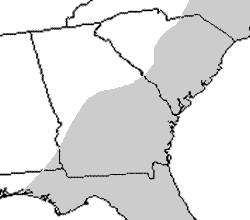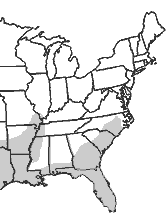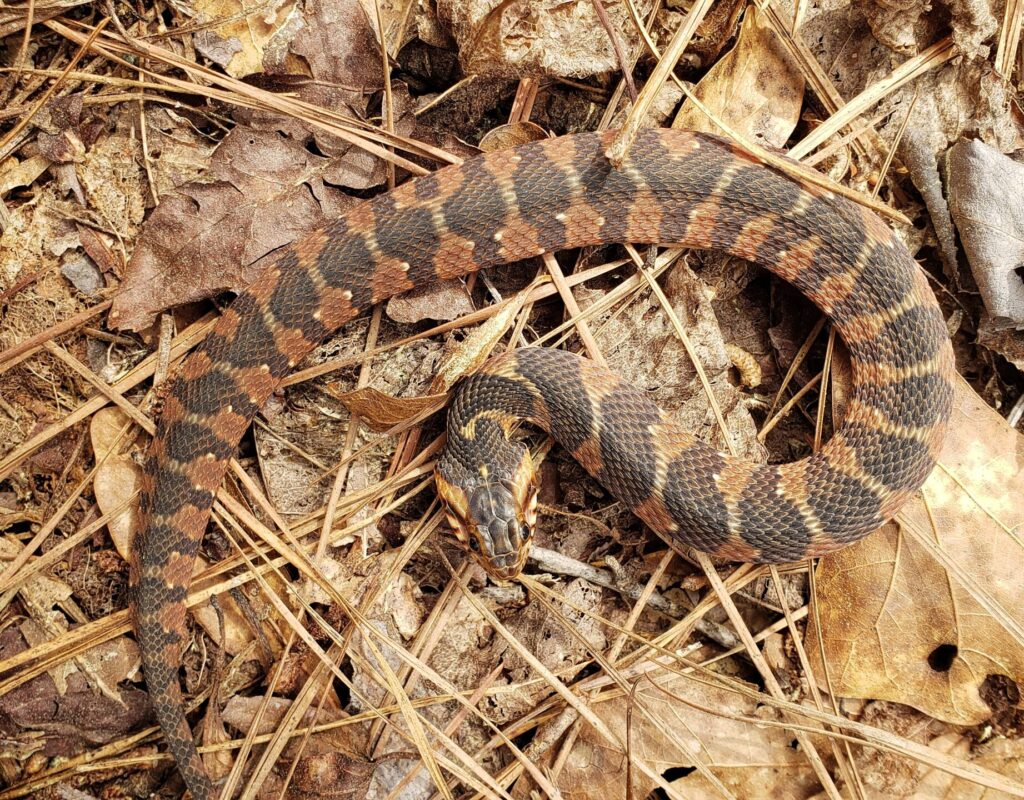Banded Watersnake (Nerodia fasciata)
Banded Watersnake (Nerodia fasciata)



Description: The banded watersnake is a medium-sized, heavy-bodied, semi-aquatic species ranging 24–48 in (61–107 cm) in length. Coloration is variable: individuals may be light brown, reddish, or nearly black, with darker crossbands that are broad across the back and narrower along the sides. Unlike the hourglass-shaped bands of the copperhead (Agkistrodon contortrix), these bands are more rectangular. Older snakes often darken, with the pattern becoming faint or obscured, and some appear almost uniformly dark. Additional markings include squarish spots along the belly and a dark facial stripe running from the eye to the corner of the jaw.
Range & Habitat: This species is distributed along the U.S. Coastal Plain from southwest Alabama to North Carolina. In our region, banded watersnakes are restricted to the Coastal Plain, where they are replaced by the closely related northern watersnake (Nerodia sipedon) in the Piedmont and mountain regions. They occur in nearly all freshwater habitats, including ponds, lakes, rivers, streams, swamps, wetlands, and marshes.
Habits: Banded watersnakes are frequently observed near aquatic habitats and are active both day and night. They bask on logs or branches overhanging the water and forage in the shallows, feeding primarily on fish and amphibians. Like other watersnakes, they are viviparous, giving birth to litters of 15–20 young in late July or August.
Conservation Status: The banded watersnake remains common throughout much of its range. It is not protected in most states, though it is legally protected across Georgia.


